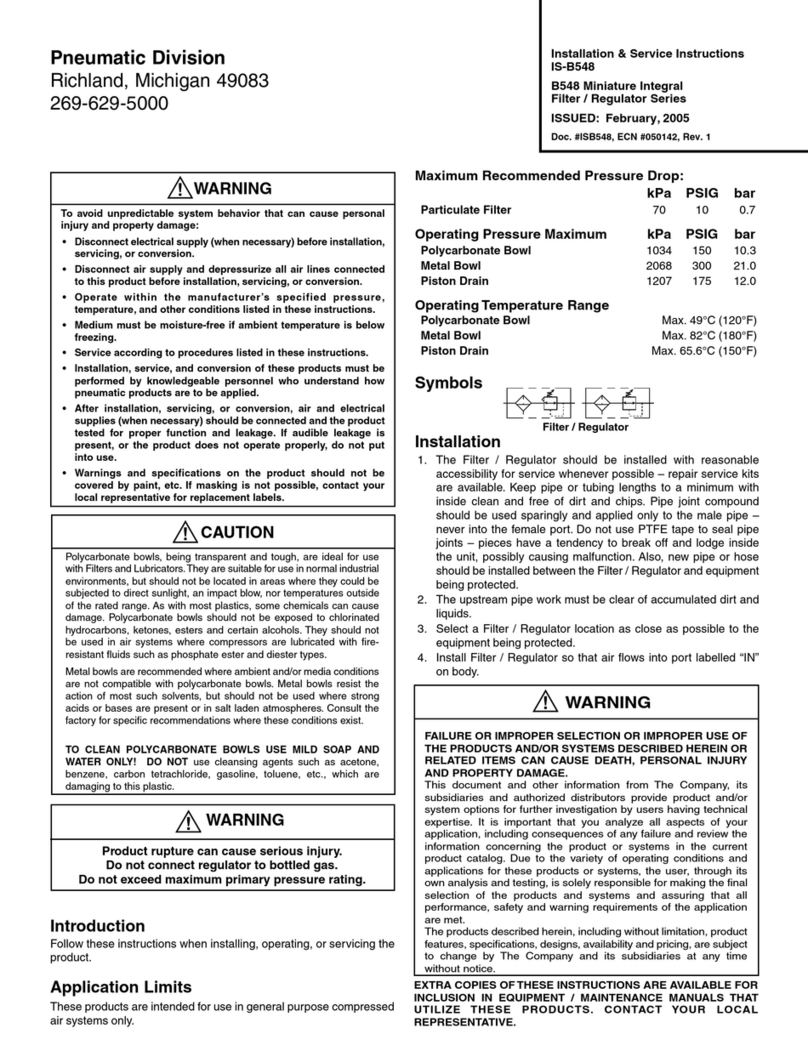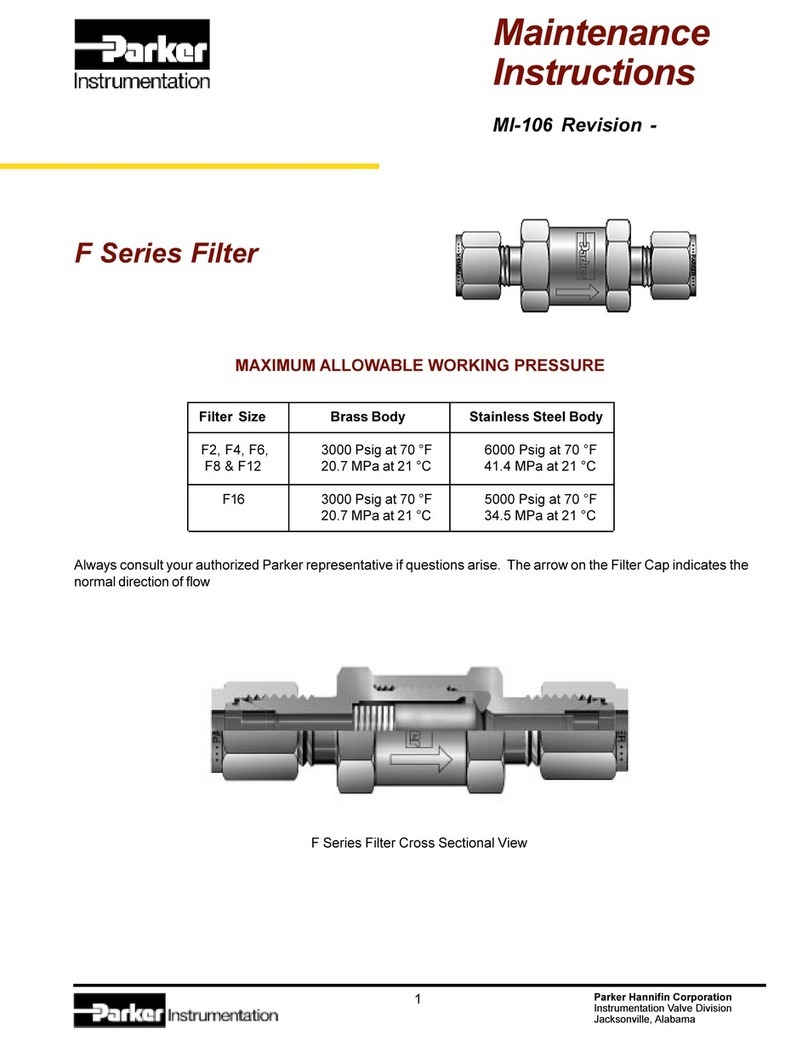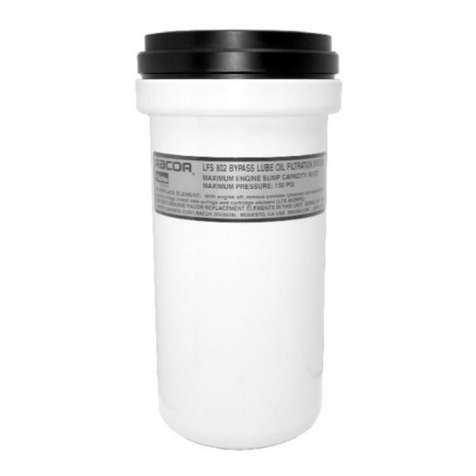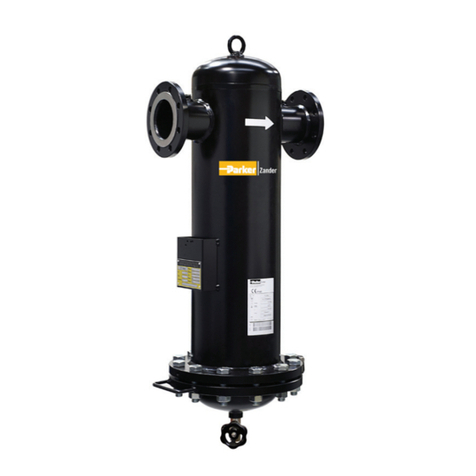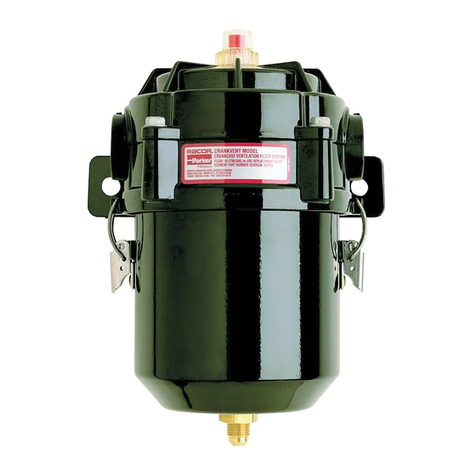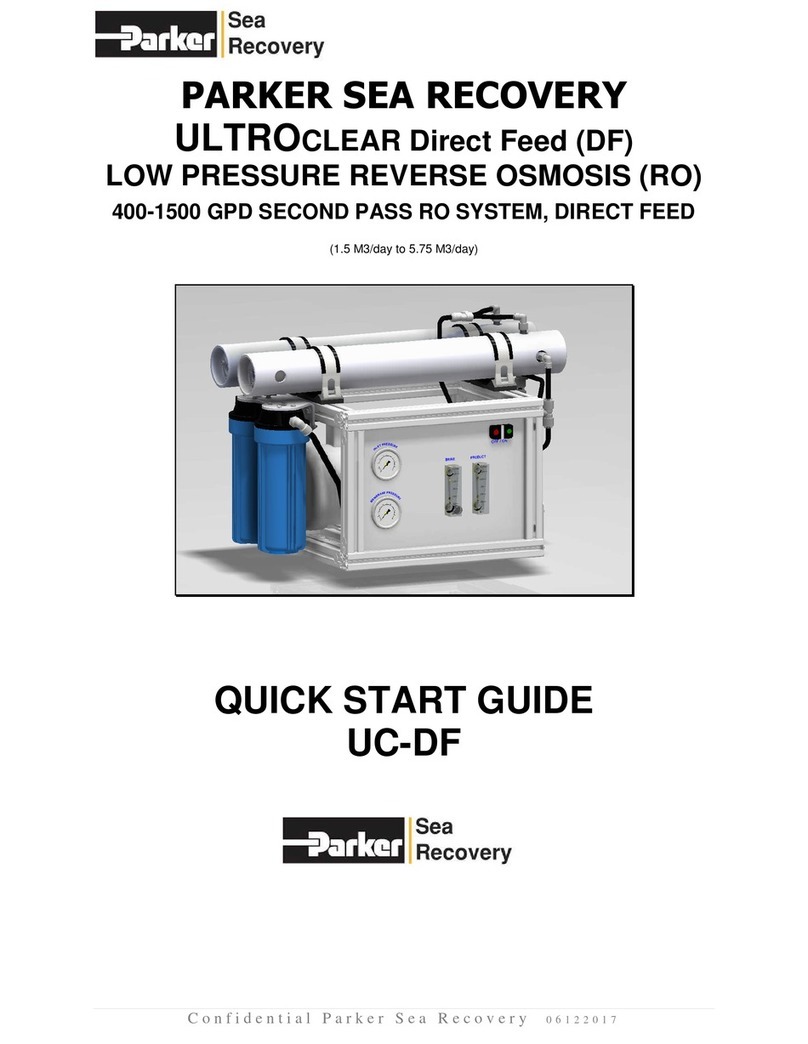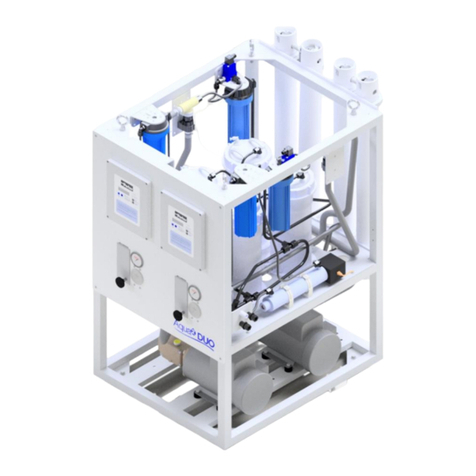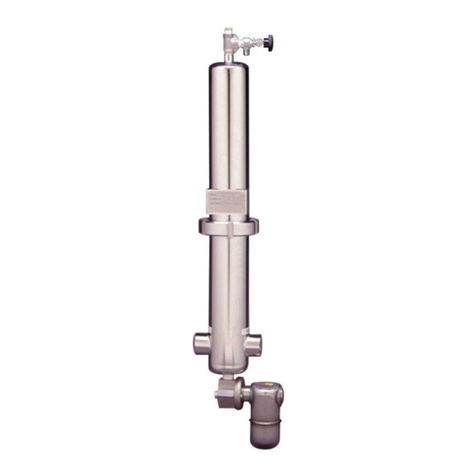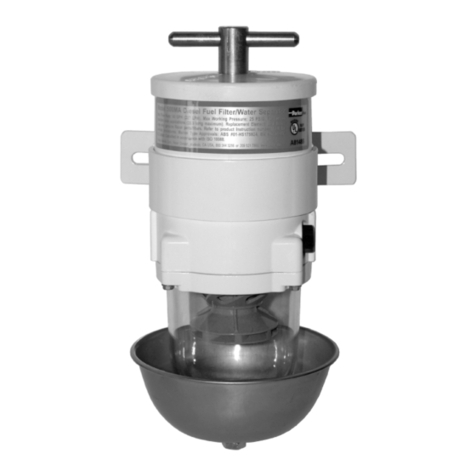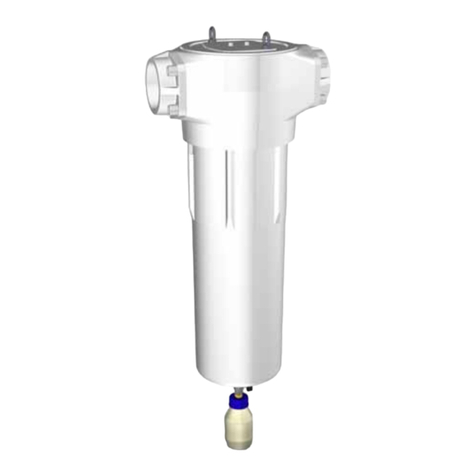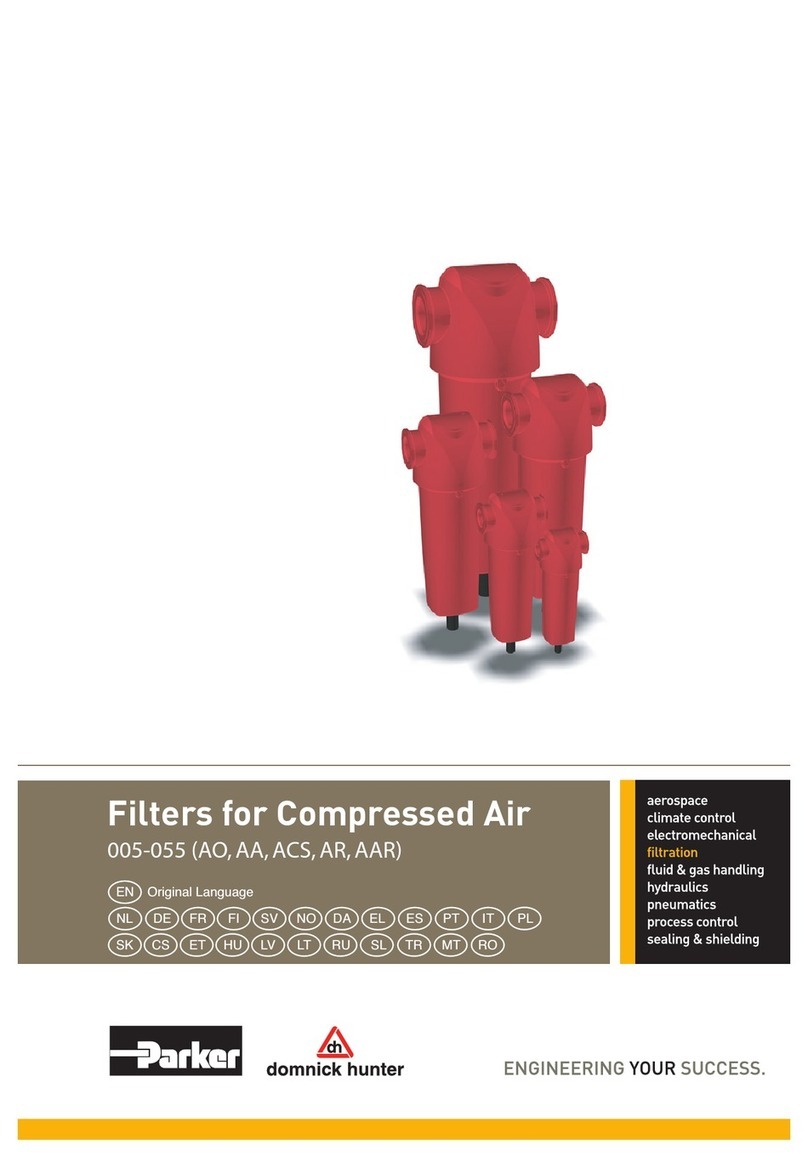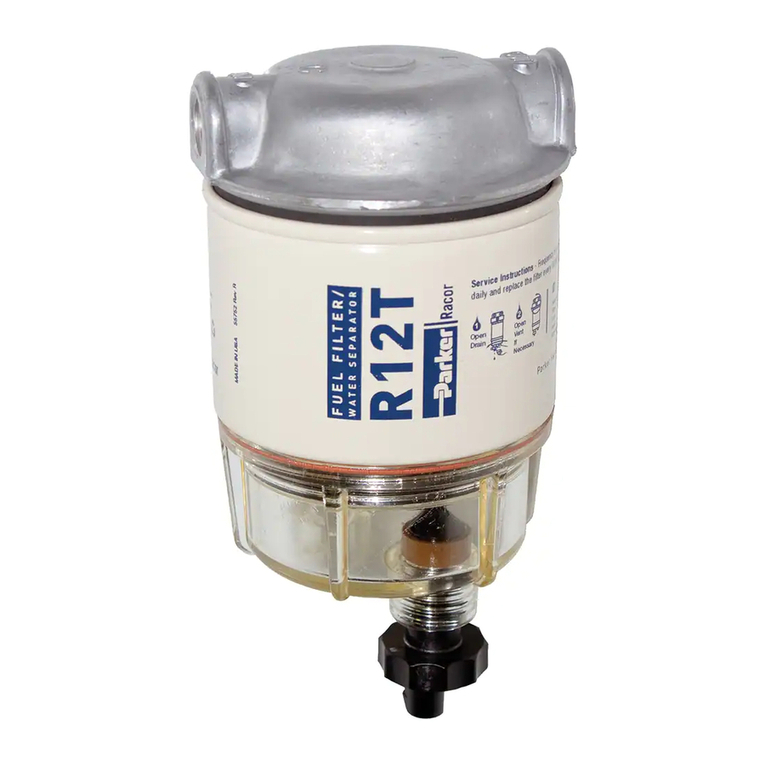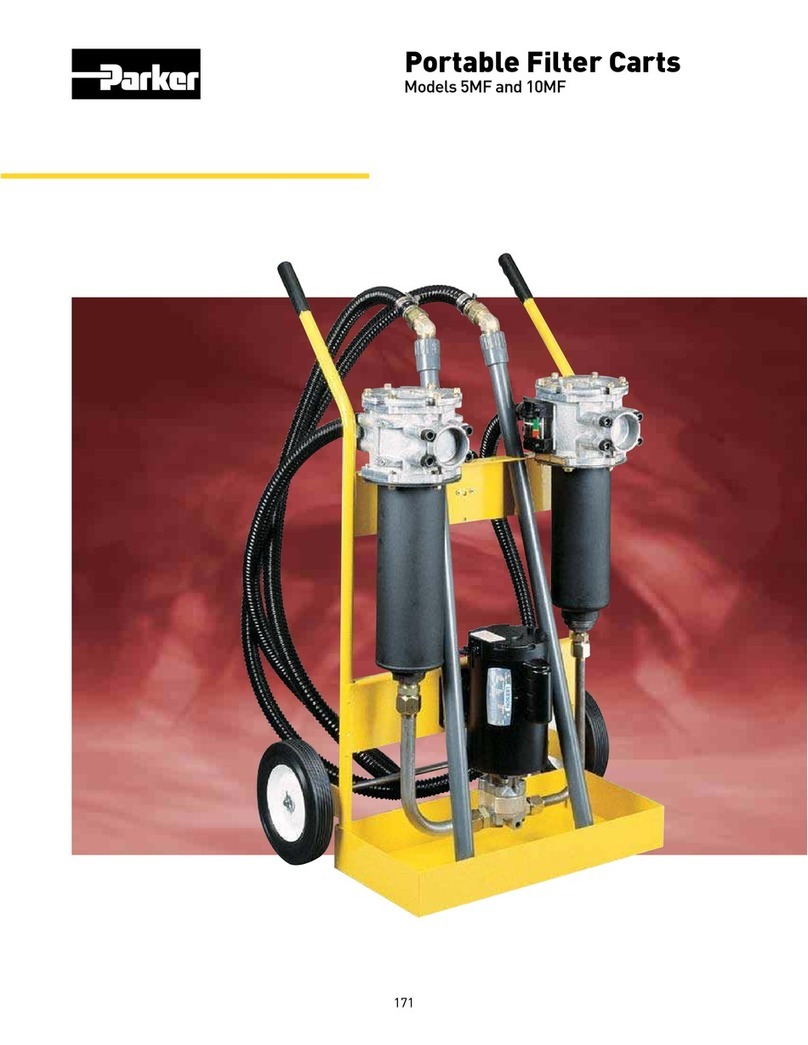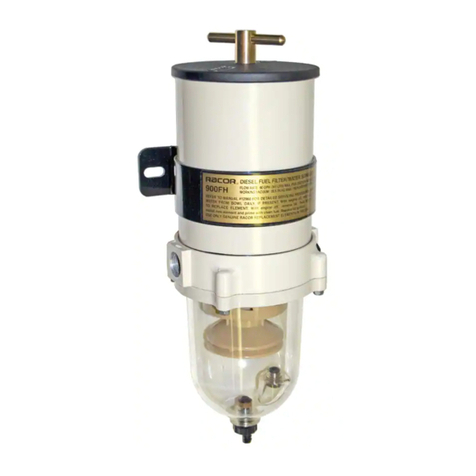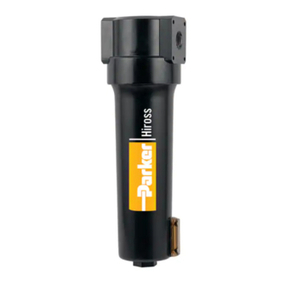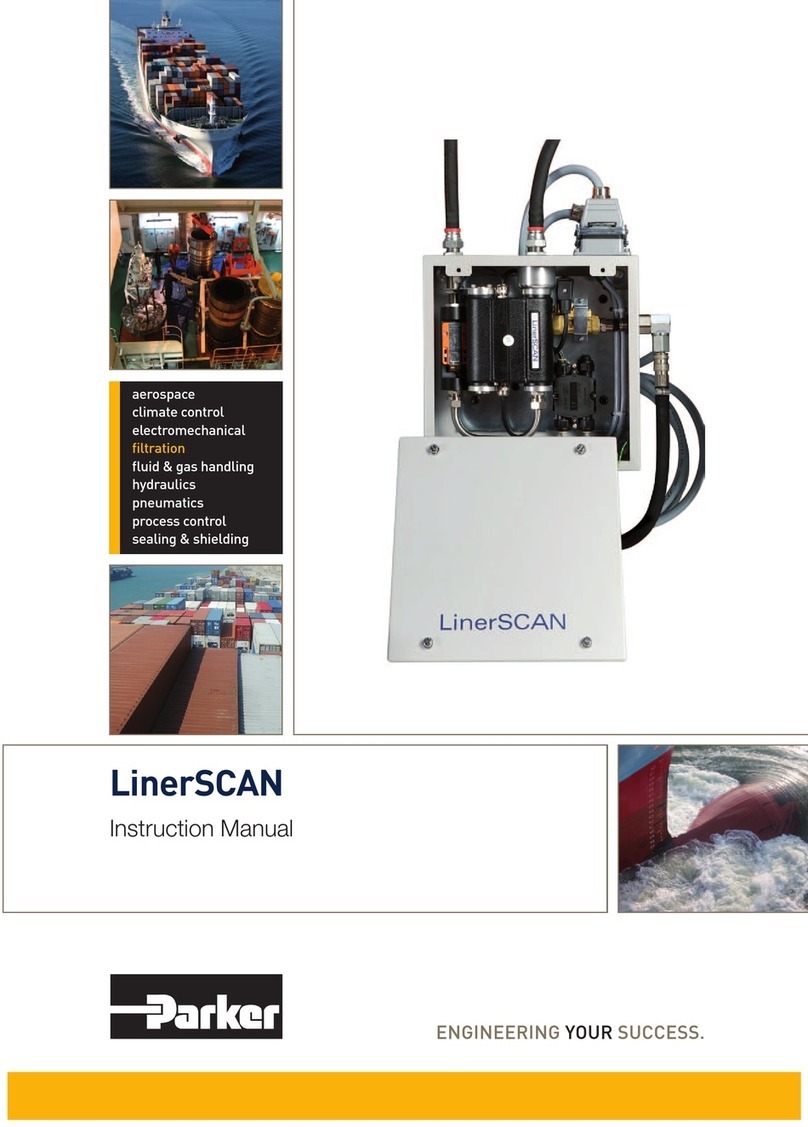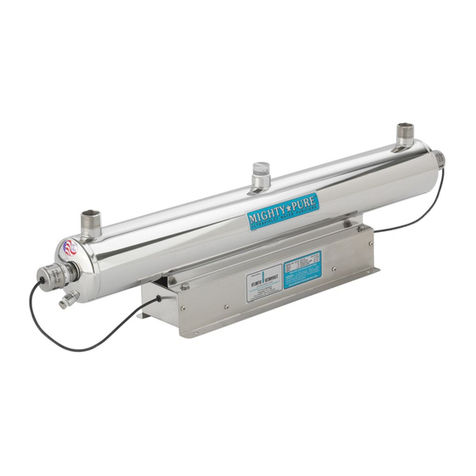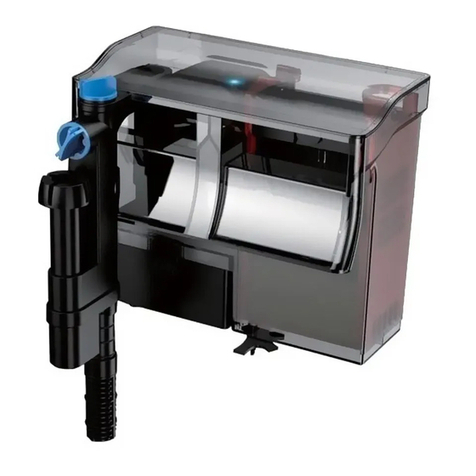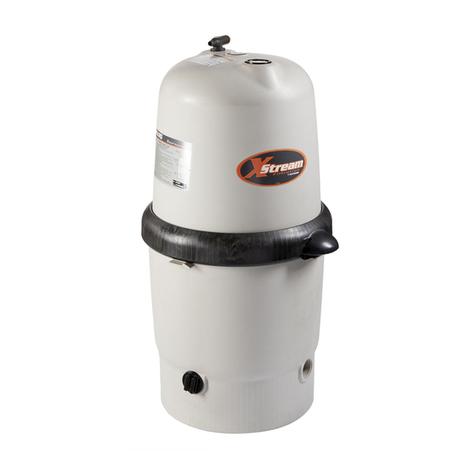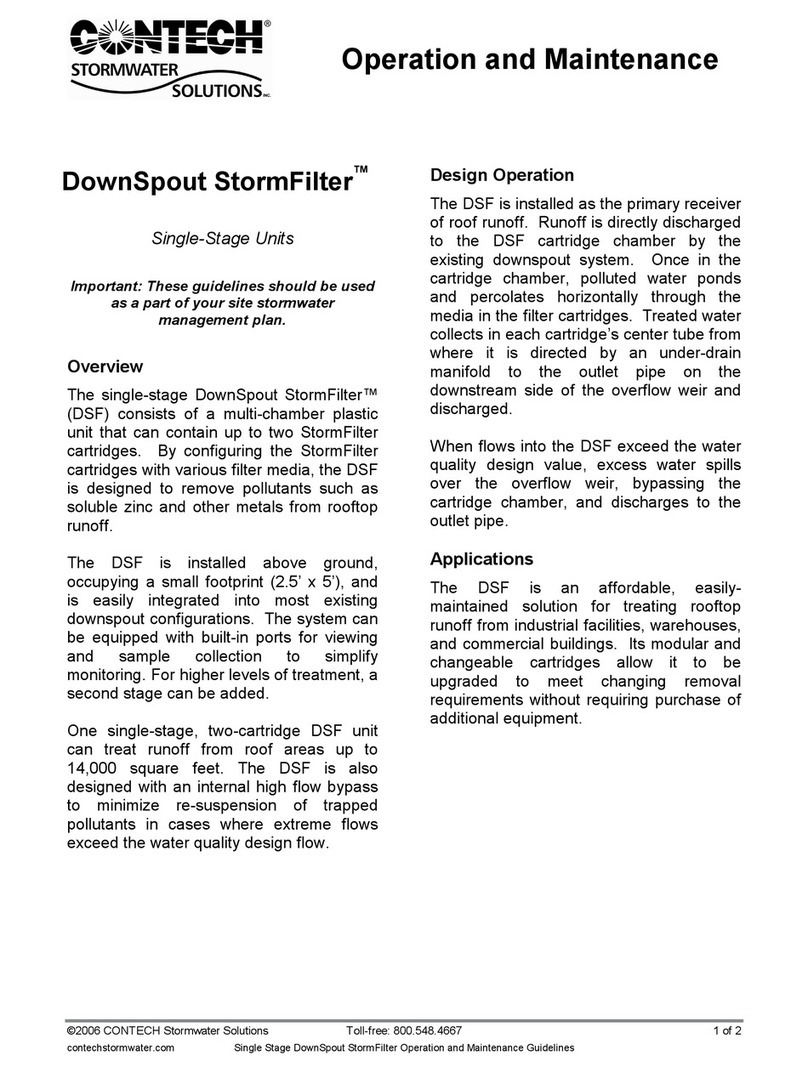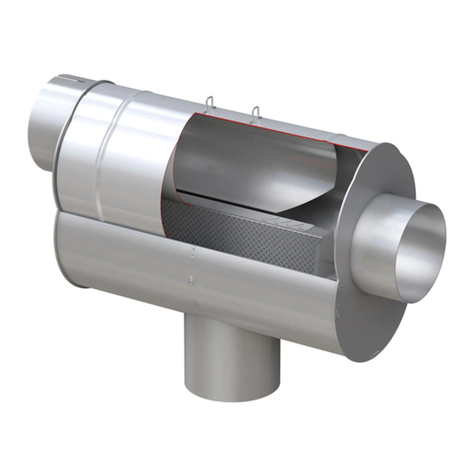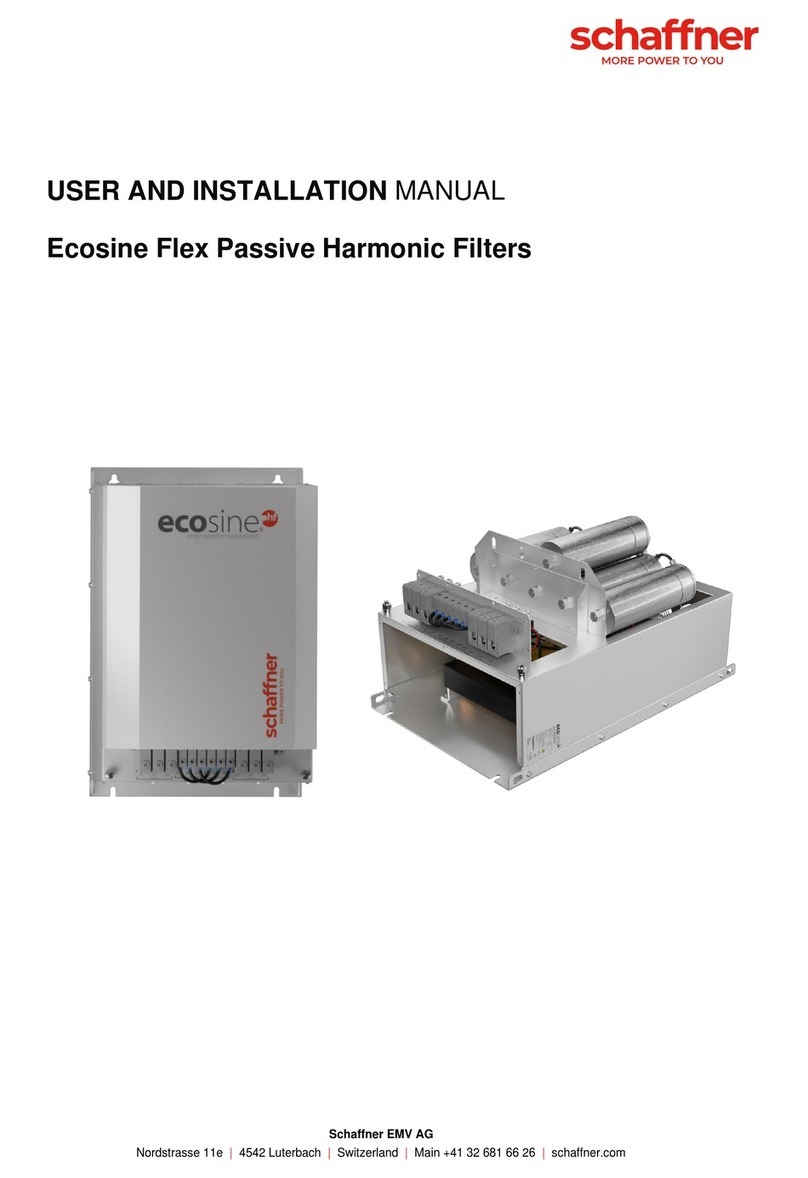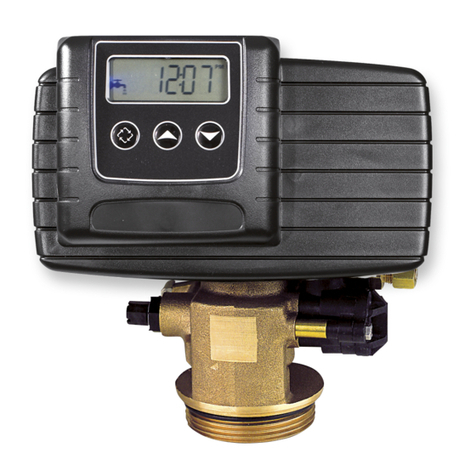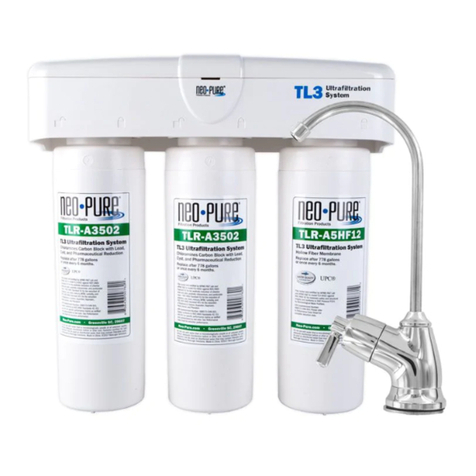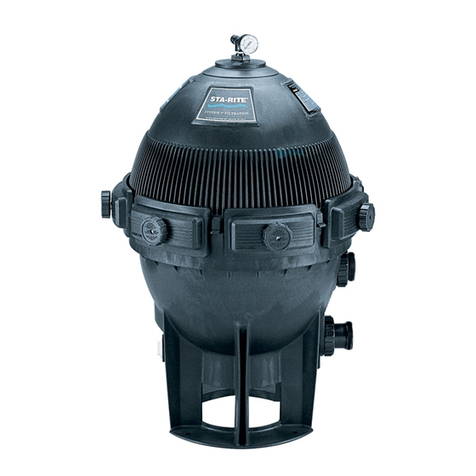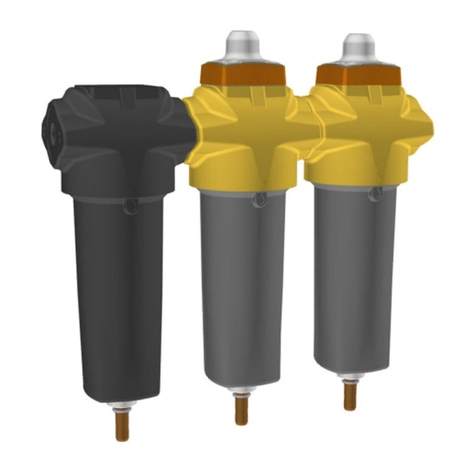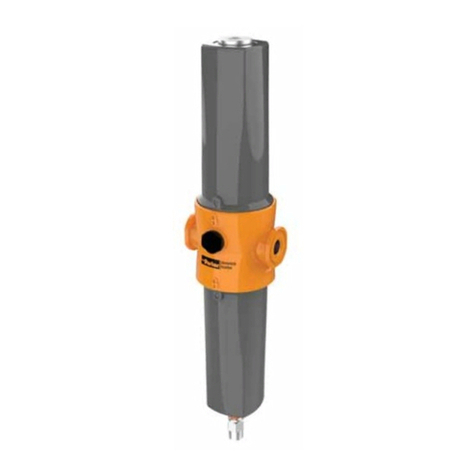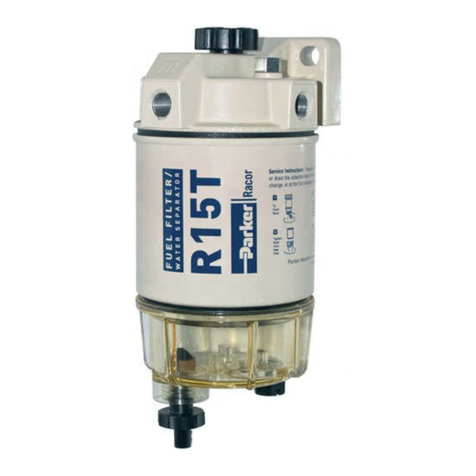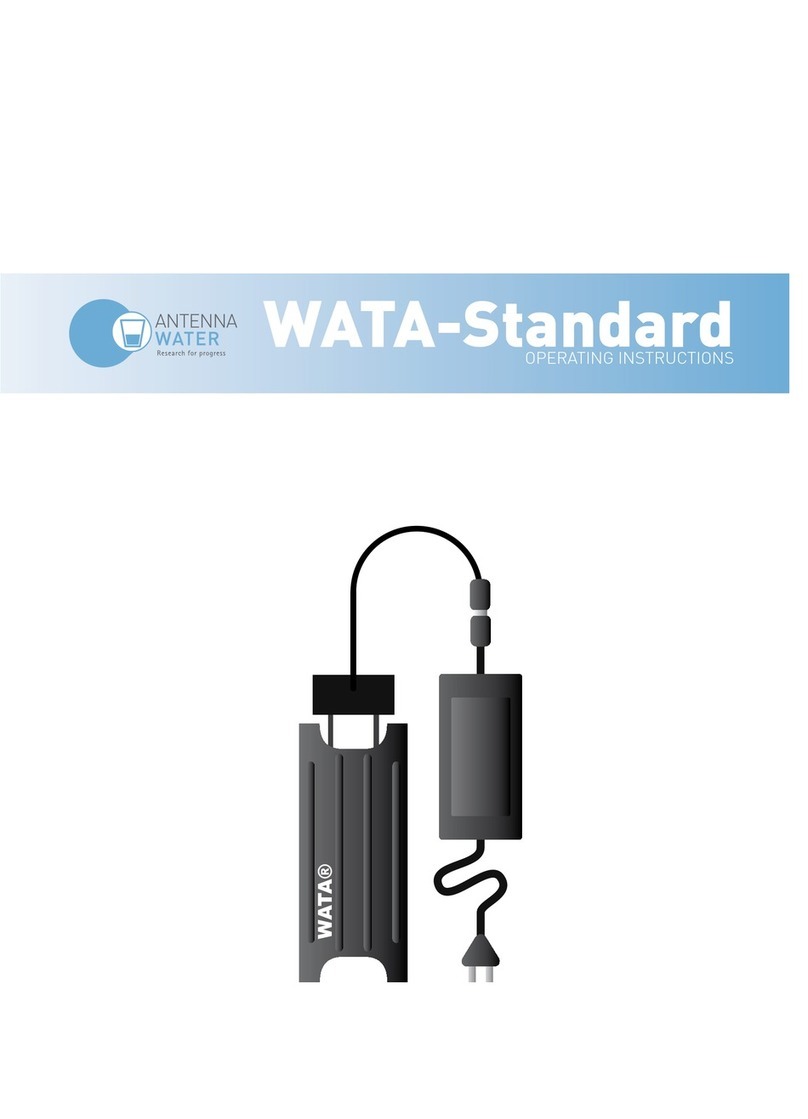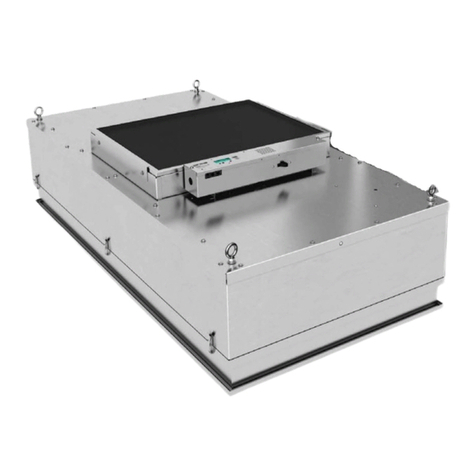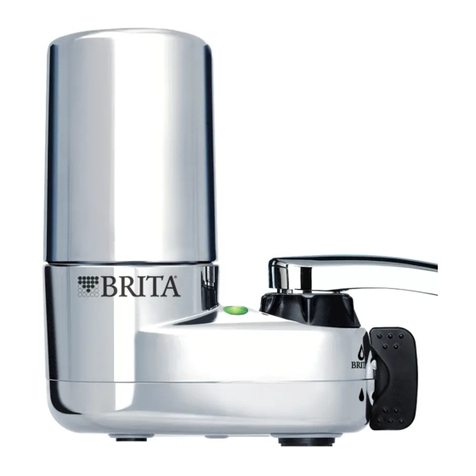
Refer to Mounting Instructions
and Installation Diagram and
install as follows:
Make sure engine is off and1.
cool to touch.
445R, 460R and 490R: Apply2.
thread sealant to NPT fittings
(do not use thread tapes
as particles may break off
and contribute to clogging
element). 4120R: Apply motor
oil or diesel fuel to O-ring on
UNF fittings.
Thread fittings into3.
appropriate fuel ports and
tighten snugly. Plug unused
ports (if any) with port plugs
and tighten snugly.
Mount filter vertically in a4.
protected area and away from
heat sources. Maintain at least
2.0” (5.1 cm) of clearance
below filter for draining water
and servicing element.
Attach fuel lines to filter.5.
Avoid tight bends and rubbing
areas when routing hose.
Connect water probe and6.
heater wires (if equipped).
Open vent plug and operate7.
hand primer pump until fuel
purges from vent.
Close vent plug and start8.
engine. Correct as necessary
with engine off.
Installation
Guidelines
Service
Element replacement frequency
is determined by contamination
level in fuels. Fuel flow to
engine becomes restricted as
element gradually plugs with
contaminants, resulting in
noticeable power loss and/or
hard starting. As a guideline,
change element every 500
hours, 10,000 miles, every
other oil change, annually,
or at first indication of power
loss, whichever occurs first.
Always carry extra replacement
elements as one tankful of
excessively dirty fuel can quickly
plug a filter.
Make sure engine is off and
1.
cool to touch.
Close all fuel valves, if2.
applicable, to make sure
excess fuel does dot spill
during servicing.
Disconnect water probe3.
and heater connectors,
if equipped.
Open vent plug on4.
mounting head.
Drain unit of fuel.5.
Remove bowl and element.6.
Dispose of element properly.
Bowl is reusable.
Lubricate new element7.
seals with motor oil or clean
fuel and install only with
new element.
Re-install bowl and tighten by8.
hand only - do not use tools.
Connect water probe9.
and heater connectors,
if equipped.
Open all fuel valves,10.
if applicable.
Operate hand primer pump11.
until fuel purges from vent.
Close vent plug and start12.
engine. Correct as necessary
with engine off.
Draining the
Collection Bowl
Water is heavier than fuel and
will settle to bottom of bowl
and appear different in color if
collected in a clear jar. In high
humidity environments, check
bowl frequently (daily if a poor
fuel source is suspected). 400
Series bowls are equipped with a
water sensor port that will accept
a water probe (sold separately)
and will alert operator of a high
water condition in the filter.
Do NOT use water probe
electronics in gasoline
applications - an explosion
could occur.
Make sure engine is off and1.
cool to touch.
Open vent plug.2.
Drain water from filter by3.
opening self-venting drain.
Close as soon as all water
has evacuated.
If drain is open too long, the
entire filter may drain completely
of water and fuel.
Follow priming instructions.4.
Priming
Prime filter by operating hand1.
primer pump until fuel spills
out of vent port.
Close vent plug snugly.2.
Verify all other connections3.
are tight.
Start engine and check for4.
leaks. Correct as necessary
with engine off.
Trouble Shooting
If filter fails to hold prime, first
check vent plug, drain valve,
fittings, head, element, and bowl
are properly tightened. Next,
check fuel line connections and
verify they are free of pinches or
unnecessary bends and check to
see if fuel tank strainer (or pick-
up tube) is clogged. If problems
persist and element is new,
call Racor Technical Support
at 800-344-3286, 8 AM to 5 PM,
Pacific Standard Time.
